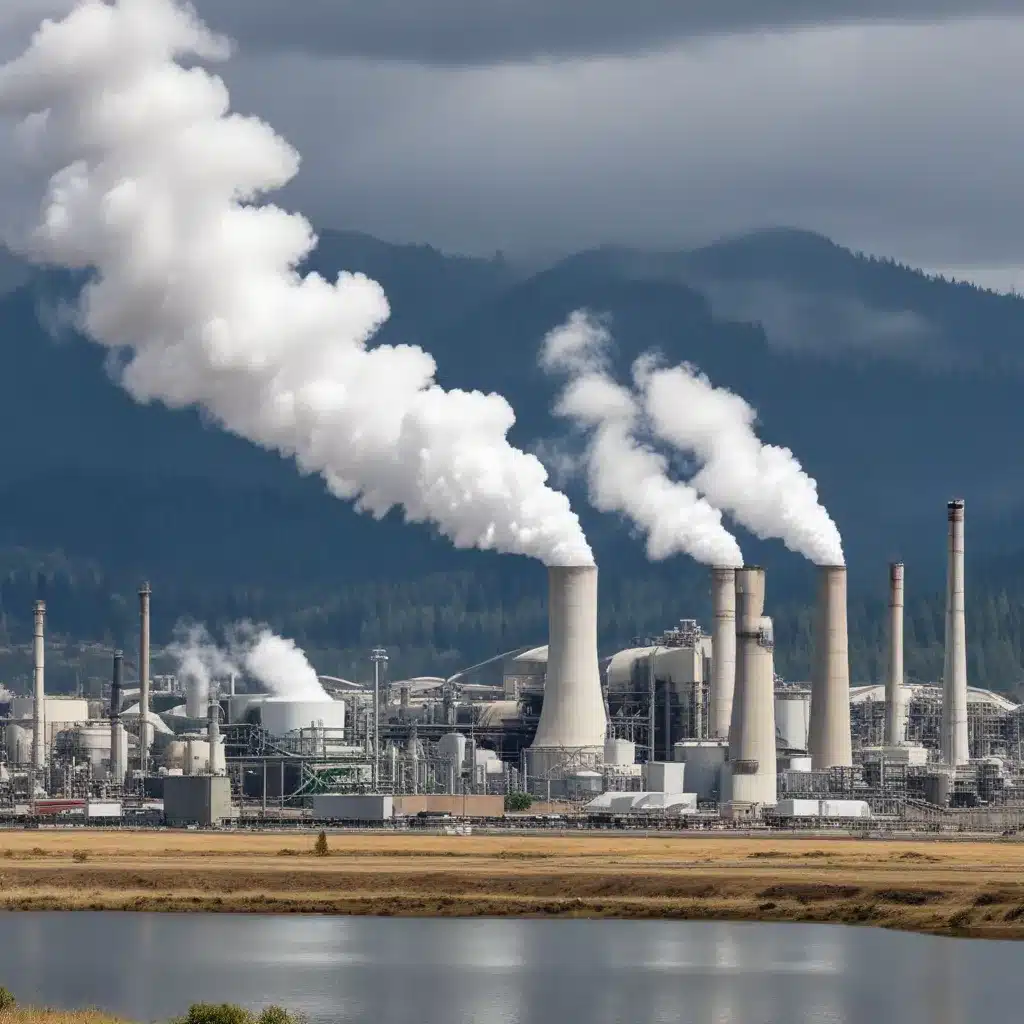
Strengthening the Fight Against Greenhouse Gas Emissions
In a crucial move to address the growing threat of climate change, the state of Oregon is relaunching its Climate Protection Program after a court-ordered setback. The program, originally approved in 2021, aims to significantly reduce greenhouse gas emissions from fossil fuel companies operating within the state.
After a lawsuit filed by natural gas companies successfully challenged the initial implementation of the program, Oregon’s Department of Environmental Quality (DEQ) has been working diligently to revise the regulations and prepare for a fresh public review process. This renewed effort is critical for Oregon to stay on track with its ambitious climate goals of reducing greenhouse gas pollution by 50% by 2035 and 90% by 2050.
Maintaining the Scope and Ambition
Despite the legal hurdle, the DEQ has remained committed to the core objectives of the Climate Protection Program. The revised draft rules closely mirror the original standards, ensuring that the program’s scope and overall ambition remain intact.
“We did build off of the work that we already did in the prior Climate Protection Program,” explains Nicole Singh, senior climate change policy advisor for DEQ. “We didn’t throw that out the window. We’re using that information to help inform this.”
Under the proposed rules, fossil fuel companies will be required to gradually decarbonize their energy supply, transitioning away from traditional fossil fuels like petroleum and natural gas, and incorporating more renewable energy sources such as wind, solar, and biofuels.
Targeting Broader Emissions Sources
One significant change in the revamped program is the expansion of regulated entities. In addition to targeting fossil fuel suppliers, the new rules will also apply to companies that are heavy natural gas users, including cement, fertilizer, and gypsum producers.
“The state, for the first time, would regulate the emissions of companies that are heavy natural gas users, not just the suppliers of their gas,” Singh confirms.
This broader approach aims to capture a wider range of greenhouse gas emissions sources, ensuring that the program’s impact extends beyond the fossil fuel industry alone.
Enhancing Compliance and Flexibility
The revised Climate Protection Program introduces a few key adjustments to enhance compliance and provide companies with more flexibility in meeting their emission reduction targets.
First, the compliance schedule has been shortened from three years to two years, requiring companies to demonstrate their progress more frequently. This change is intended to maintain momentum and ensure that the program’s goals are being actively pursued.
To offer companies some flexibility, the program will allow them to offset a portion of their emissions through the purchase of carbon credits. During the first two years, companies can offset up to 15% of their emissions, and this percentage increases to 20% in each subsequent two-year compliance period.
“Money from those credits are invested in projects that reduce greenhouse gas emissions,” Singh explains, highlighting the program’s emphasis on funding community-based decarbonization and renewable energy initiatives.
Empowering Tribal Involvement and Oversight
Another notable change in the revamped Climate Protection Program is the increased role and funding for Oregon’s nine federally recognized tribes. The proposed rules ensure that these tribal communities have a more significant say in determining the distribution of the carbon credit program’s investment grants.
Additionally, the state will allocate a portion of the funding, approximately 4.5%, to enhance internal and external auditing processes. This step aims to ensure the appropriate use of funds and verify the emission reduction outcomes of the supported projects.
Ensuring Affordability and Transparency
Recognizing the potential impact on natural gas rates for Oregonians, the DEQ has committed to working closely with the Oregon Public Utilities Commission. This collaboration will help the state better understand the implications of the Climate Protection Program on consumer costs and prevent companies from passing on the full burden of decarbonization to their customers.
“DEQ also proposes to work more closely with the Oregon Public Utilities Commission to understand how the Climate Protection Program will affect natural gas rates for Oregonians and to ensure companies aren’t passing all the costs of decarbonization on to their customers,” Singh notes.
Staying the Course Towards a Sustainable Future
Despite the legal setback and the need to restart the rulemaking process, Oregon’s commitment to its Climate Protection Program remains unwavering. The state’s environmental regulators are determined to learn from the previous experience and emerge with a strengthened program that maintains the same ambitious goals while addressing the concerns raised by the court.
As Nicole Singh emphasizes, “While we have to do a redo here, this is not starting from square one. We really do want to honor all of the time and commitment people have already put into the process.”
The revamped Climate Protection Program, with its enhanced compliance mechanisms, broader emission sources, and increased community engagement, positions Oregon as a leader in the fight against climate change. By staying the course and incorporating valuable feedback, the state is poised to make significant strides towards a more sustainable future for its citizens and the planet.
To stay up-to-date on the latest developments and learn more about the IT industry’s role in environmental sustainability, be sure to visit ITFix, your go-to resource for practical technology insights and solutions.
Key Takeaways:
- Oregon is relaunching its Climate Protection Program after a court-ordered setback, maintaining the program’s ambitious goals.
- The revised regulations expand the scope to include heavy natural gas users, in addition to fossil fuel suppliers.
- Compliance has been strengthened, with a shorter two-year cycle and increased flexibility through carbon credit offsets.
- Tribal communities will have a more significant role in the carbon credit investment program.
- The state is committed to ensuring affordability and transparency, working closely with the Public Utilities Commission.
- Despite the legal hurdle, Oregon remains determined to stay the course towards its greenhouse gas reduction targets.












